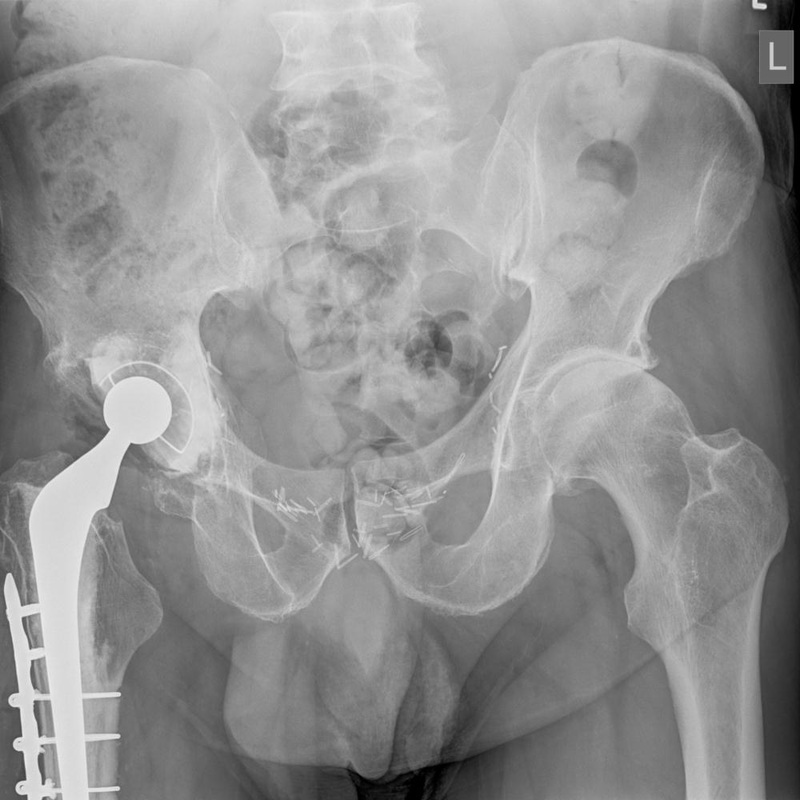|
A man in his 60s, who had a right total hip replacement 14 years ago, saw his GP complaining of right leg pain which started as he got out of his car the day before. He had been taking naproxen and tramadol but was still in pain, using crutches to weight-bear. He was referred to the ED for assessment and imaging. He told the EM doctor a bit more: he had been feeling sweaty and nauseated but had not felt he'd had a raised temperature. His right hip was tender to palpation and flexion was limited to 45° by pain. Plain imaging of the right hip was requested:
There is gas in the joint which actually tracked down the prosthesis in the anterolateral thigh. In a native joint the infection (gas and pus) would have remained within the joint capsule but in a prosthetic joint there is no capsule so infection can track down the length of the prosthesis. This was not picked up until an infective screen was performed showing a white cell count of 10.5 (3.6-9.2) and a CRP of 338 (<5). An ultrasound of the right hip region was requested to exclude a psoas abscess. This showed fluid in the fascial planes and in the subcutaneous plane along the lateral aspect of the thigh and was interpreted as showing cellulitis and fasciitis, later clarified on isotope scan and then CT (Below). Blood cultures grew Bacteroides fragilis, an obligate anaerobe which is usually commensal. This is a relatively unusual finding but one we should be aware of. There is an old saying “if you are a hammer then everything you see is a nail”. If you look at a plain image and only search for a fracture then you will miss the other abnormalities. In retrospect the gas was visible on the initial image but it took a lot more imaging and a lot of doctors to come up with the diagnosis.
Which organisms form gas? The classic ones are Clostridium perfringens and Escherichia coli but Bacteroides spp. and other gut flora can also form gas. Classically the organism enters the body through a wound but translocation from the gut is also theoretically possible (and clearly was in this case, as there was no wound). The gas is predominantly nitrogenous and the pus, in the case of C perfringens, is classically thinner than usual and has been referred to as “dishwater pus”. Treatment is surgical débridement with excision of affected tissue and, in this case, re-do total hip arthroplasty. Antibiotic therapy is supportive, but the emphasis on treatment for this condition is the removal of necrotic and infected tissue with liberal washout. Thanks Dan H.
1 Comment
Dave P
9/1/2016 18:51:23
Ditto!
Reply
Leave a Reply. |
Categories
All
The Derrifoam BlogWelcome to the Derrifoam blog - interesting pictures, numbers, pitfalls and learning points from the last few weeks. Qualityish CPD made quick and easy..... Archives
October 2022
|

